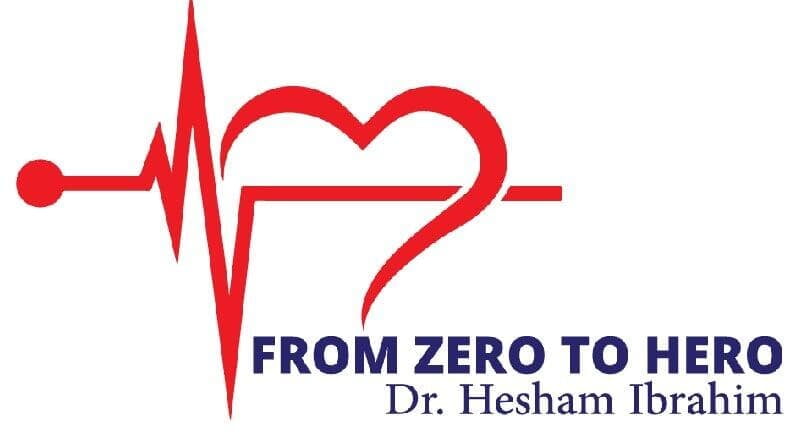ED GovCast Episode 2
Cerebral Venous Sinus Thrombosis, Life-Threatening Asthma & Key ED Learning
In this episode, we discussed 3 different clinical cases:
- Case 1: Cerebral Venous Sinus Thrombosis.
- Case 2: Life-Threatening Asthma and Cardiac Arrest.
- Case 3: Breast Infection and Abscess Management.
"Clinical Case Discussions"
Case 1: Cerebral Venous Sinus Thrombosis
- Presentation:
- 39-year-old female with a one-week history of headache and lethargy, associated with new-onset word-finding difficulties.
- Past History:
- Previous pulmonary embolism in the postpartum period, 13 years prior.
- Outcome:
- Imaging revealed a left transverse sinus thrombosis extending into the left sigmoid sinus.
- The patient subsequently had a seizure in the emergency department.
- Key Learning Points:
- Headaches may be:
- primary (e.g., tension, cluster, musculoskeletal).
- secondary (e.g., meningitis, vascular events, raised intracranial pressure).
- CVST is a rare but serious cause of secondary headache.
- Risk factors include:
- History of venous thromboembolism.
- Use of oral contraceptives.
- Imaging should be considered when neurological symptoms accompany headache.
- Further Reading:
Case 2: Life-Threatening Asthma and Cardiac Arrest
- Presentation:
- Young male presenting post-resuscitation following a prolonged asthma-related cardiac arrest (ROSC after 40 minutes).
- Prehospital Care:
- Intubation, ventilation, and bilateral thoracostomies performed by the paramedic and Helicopter Emergency Medical Service (HEMS) team.
- Management Approach for Asthma:
- Initial steps: Oxygen, nebulised bronchodilators, and systemic corticosteroids.
Further Reading:
Refer to and follow BTS/SIGN guidelines for asthma management:
- https://www.brit-thoracic.org.uk/document-library/guidelines/asthma/btssign-asthma-guideline-quick-reference-guide-2019/
Case 3: Breast Infection and Abscess Management
- Presentation:
- Woman in her 30s with breast pain, mild redness, and swelling.
- Initially treated with oral antibiotics; symptoms worsened over 14 hours with blistering and signs of necrosis.
- Outcome:
- Surgical incision and drainage with debridement
- Key Learning Points:
- Antibiotics alone may be insufficient in suspected breast abscess; consider the underlying pathophysiology (e.g. blocked duct, milk stasis).
- Early use of warm compresses and massage techniques can aid drainage:
- Circular massage for lumps.
- Four-finger stroking toward the nipple, particularly during feeding.
- Early review by the breast team is crucial when there is progression or systemic concern.
- Local Note:
- Staff within the trust should refer to the Breast Care Pathway, available on the intranet and EOLAS app.
"Cognitive Aids in Emergency Care"
- Recommended Tools:
- The UK Resuscitation Council Guidelines app.
- Southampton Oxford Retrieval Team (SORT) app for paediatric emergencies.
- NICE Guidelines (e.g., head injury imaging criteria).
- Key Points:
- Clinicians should develop a personal hierarchy for accessing cognitive aids: memory, apps, printed resources.
- Use of checklists and memorised first-line actions mirrors safety strategies used in aviation.
- Junior clinicians are encouraged to consult resources when unsure—this supports safe and effective care.
"Learning from Incidents"
- Neutropenic Sepsis:
- There continue to be episodes of delayed antibiotic administration in patients with suspected neutropenic sepsis. This remains a critical safety concern.
- Patients presenting with potential neutropenic sepsis must be:
- Prioritised for assessment in the initial assessment area
- Promptly administered empirical intravenous antibiotics as per trust protocol Early recognition and timely management are essential in improving outcomes in this high-risk group.
- Radiological Vigilance:
- One case highlighted the importance of reviewing the entire radiograph, not just the area of clinical focus. A patient who presented with a shoulder complaint had a normal shoulder X-ray; however, suspicious findings in the lung field were later suggestive of possible malignancy.
- Learning Point:
- Always review the whole image, including incidental areas, as subtle but significant findings may be overlooked.
"Clinical Pearl: Paediatric Pain Management"
- Effective analgesia is a cornerstone of good emergency care for children.
- Clinicians should feel confident using the following modalities as part of standard paediatric pain management protocols.
- A reminder of the available options:
- Moderate pain:
- Oral morphine is often underutilised.
- The recommended dose is 0.2–0.5 mg/kg, supported by current paediatric analgesia guidelines.
- Severe pain (e.g., fractures):
- Intranasal fentanyl offers rapid and effective pain relief
- Intravenous morphine remains a key option where IV access is established
"Celebrations"
- Poster Presentation at RCEM Conference Congratulations to Dr Megan, who presented a poster at the RCEM Annual Conference in Glasgow. Her work on the care of young patients presenting with paracetamol overdose in the emergency department won the Association of Paediatric Emergency Medicine Prize. A fantastic achievement—well done!
- Wessex EM Innovation & Excellence Awards Several colleagues recently showcased their work at the Wessex Emergency Medicine Innovation and Excellence Awards. Dr Shan, Dr Rachel and Dr Gabriella presented their QI project in the management of paediatric forearm fracture manipulations in the ED.
- Clinical Excellence in Paediatric Care: We also celebrate Dr Asaf for his exemplary assessment and management of abdominal pain in a young patient earlier this month. His thoughtful and thorough approach was commended by colleagues. Excellent work.
Thank you for joining us on our second episode!
Stay tuned for more real cases, lessons, and shared learning from the ED shop floor
